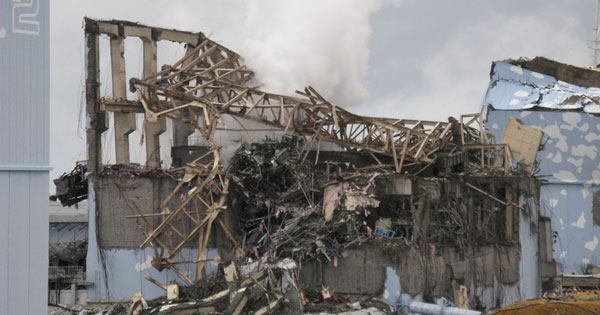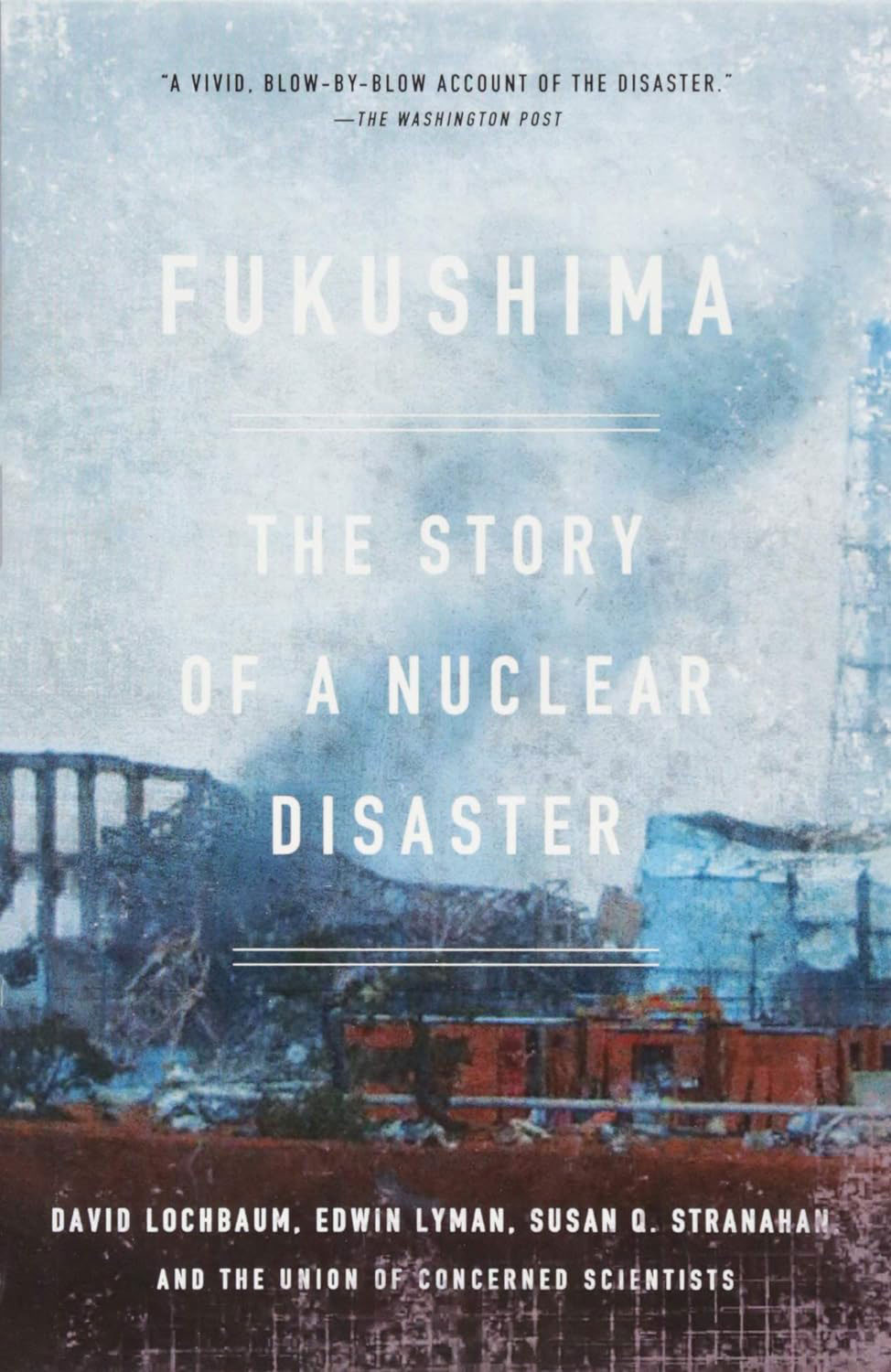Fukushima: The Story of a Nuclear Disaster
By Susan Stranahan, David Lochbaum, The Union of Concerned Scientists
Published on 11 Feb 2014
Review:
An analysis of the Fukushima disaster
By Cygnus | 22 January 2024
The worst nightmare that scientists can have sometimes come true. Check every box in a long list of dos and don’ts, double-check it all over again, and then sit back and relax. And then it hits you out of the blue!
That was what happened when an earthquake and tsunami triggered a nuclear crisis at the Fukushima Daiichi nuclear power plant in Japan on 11th March 2011.
The book Fukushima: The Story of a Nuclear Disaster is a comprehensive and compelling account of the catastrophic events that unfolded on that date.

Co-authored by David Lochbaum, Edwin Lyman, Susan Q. Stranahan, and The Union of Concerned Scientists, this book offers a detailed examination of the disaster, its causes, the response, and the lessons that can be learned from this tragic event.
The Fukushima Daiichi disaster was one of the most disastrous nuclear accidents in history, and the authors of this book have done a remarkable job in dissecting the complex series of events that led to it. Their meticulous research and in-depth analysis provide readers with a comprehensive understanding of the disaster’s root causes, its immediate and long-term consequences, and the myriad challenges faced by the individuals involved in the response efforts.
One of the standout qualities of Fukushima: The Story of a Nuclear Disaster is its accessibility. The authors have managed to present a highly technical and complex subject matter in a way that is understandable to both experts in the field and the general public. This balance between depth and accessibility is crucial, as it allows a wide range of readers to engage with the book and gain a profound understanding of the events at Fukushima Daiichi.
The book begins by setting the stage, providing readers with essential background information on nuclear power, the Fukushima Daiichi plant, and the region’s seismic history. This context is crucial for understanding the disaster’s magnitude and the challenges that emerged during its aftermath.
The authors also delve into the history of nuclear power in Japan and the political and economic factors that contributed to the rapid expansion of the nuclear industry in the country.
The heart of the book, however, lies in its meticulous reconstruction of the events leading up to and following the disaster. The earthquake and tsunami themselves were natural disasters of unprecedented scale, but it was the subsequent failures in plant design, safety procedures, and communication that transformed a natural disaster into a nuclear catastrophe. The authors provide a detailed and harrowing account of the moments when the plant’s reactors began to fail, the release of radioactive materials, and the desperate efforts of workers to prevent a complete meltdown.
One of the most significant contributions of this book is its examination of the human element in the disaster. Through interviews with plant workers, government officials, and local residents, the authors provide a human face to the tragedy. These personal accounts offer a glimpse into the fear, confusion, and determination that characterized the response efforts. Additionally, the book sheds light on the lack of preparedness and coordination among various stakeholders, highlighting the challenges faced by those on the front lines of the crisis.
The authors also explore the decision-making processes of both plant operators and government officials during the disaster. They discuss how the information flow was often slow and incomplete, leading to a lack of timely and effective responses. The book delves into the reluctance of the Japanese government and Tokyo Electric Power Company (TEPCO) to disclose critical information, which eroded public trust and hindered efforts to manage the crisis effectively.
Another notable aspect of the book is its examination of the international response to the Fukushima Daiichi disaster. It discusses how the accident had global implications, sparking debates and reevaluations of nuclear safety standards and regulations worldwide. The authors provide insights into how various countries reacted, with some opting to reassess their nuclear energy policies and others continuing with their nuclear programs, albeit with enhanced safety measures.
Throughout the book, the authors also explore the long-term consequences of the Fukushima Daiichi disaster. They discuss the challenges of decommissioning the damaged reactors and the ongoing efforts to contain and manage radioactive materials. The book addresses the social, economic, and environmental impacts of the disaster, including the displacement of communities, the economic costs, and the effects on public perception of nuclear power.
The authors’ expertise and dedication to providing a thorough account of the disaster are evident throughout the book. They draw upon a wide range of sources, including technical reports, government documents, interviews, and firsthand accounts, to create a comprehensive and well-documented narrative. This commitment to accuracy and detail is commendable and adds to the book’s credibility.
One of the book’s strengths is its ability to balance technical information with human stories and broader societal implications. It goes beyond the technical aspects of nuclear engineering and safety to examine the political, cultural, and ethical dimensions of the disaster. This holistic approach allows readers to appreciate the multifaceted nature of the Fukushima Daiichi crisis and its relevance to a broader global context.
Additionally, the book includes numerous photographs, diagrams, and maps that enhance the reader’s understanding of the events and the geographical layout of the Fukushima Daiichi plant. These visual aids are invaluable in helping readers grasp the intricacies of the disaster and the challenges faced by responders.
While Fukushima: The Story of a Nuclear Disaster is a commendable work in many respects, it is not without its limitations. Given the complexity of the subject matter, some readers may find certain technical explanations challenging to follow, particularly those without a background in nuclear engineering or science. However, the authors make a concerted effort to simplify technical concepts as much as possible, and the glossary of terms at the end of the book is a helpful resource for those seeking clarification.
Furthermore, while the book provides a detailed and critical analysis of the disaster and its aftermath, some readers may wish for a more explicit discussion of policy recommendations and lessons learned. The authors do touch upon the need for improved safety measures and international collaboration, but a more focused section on specific policy recommendations and their implications could have been beneficial.
In conclusion, Fukushima: The Story of a Nuclear Disaster is a meticulously researched and highly informative book that offers a comprehensive account of the Fukushima Daiichi disaster. Its accessibility, detailed analysis, and inclusion of personal stories make it a valuable resource for anyone interested in understanding the events and implications of this catastrophic nuclear accident.










